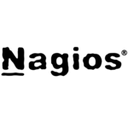Log Management software: purchase guide
Log Management Software in 2025: Because Every Event Tells a Story
What Is Log Management Software?
Log management software is like a digital black box for your IT infrastructure. Every click, access attempt, configuration change, or security event generates logs—massive streams of data that tell the story of what’s happening across your systems. Log management tools collect, centralize, analyze, and help you make sense of all that information.
More than just storage, this software turns raw log data into actionable insights. It lets you detect anomalies, trace incidents, troubleshoot errors, meet compliance requirements, and stay ahead of security threats.
If you think of your IT environment as a living system, log management is your way of listening to its heartbeat.
Why It Matters in 2025
Logs used to be something only sysadmins cared about—until outages, breaches, and compliance audits became everyone's business. Today, the stakes are higher, environments are more distributed, and visibility is non-negotiable.
Security starts with visibility
In 2025, cybersecurity is not just about firewalls and antivirus—it’s about knowing what’s going on in your systems at all times. Logs help detect unusual patterns, unauthorized access attempts, privilege escalations, and shadow IT activity. Without log management, these signs are just digital noise. With it, they become your early warning system.
Troubleshooting without logs is guesswork
Whether you're tracking a performance dip, a failed deployment, or a user complaint, logs provide the context your team needs to resolve issues quickly. A centralized log management system reduces mean time to resolution (MTTR), helps you correlate events, and keeps support teams from flying blind.
Compliance isn’t a checkbox—it’s a daily practice
From GDPR to HIPAA to ISO 27001, most regulations now require traceability, data retention, and access audit logs. A solid log management platform helps you store, organize, and retrieve logs efficiently, so you’re always audit-ready without scrambling.
How to Choose the Right Log Management Software
There’s no universal best solution—only the best fit for your environment. Choosing the right platform means considering your volume, goals, and internal workflows. Here's what to weigh seriously:
Centralization and scalability
You want a platform that can ingest logs from multiple sources: servers, applications, firewalls, endpoints, and cloud infrastructure. It must handle growing data volumes without slowing down or requiring a rebuild every six months. Think long-term: how much data will you be handling in 18 months?
Real-time analysis and intelligent alerting
Storing logs is one thing. Making sense of them in real-time is another. The best solutions let you set up alerts, trigger workflows, or integrate with SIEM systems so you can act on suspicious activity as it unfolds. Bonus if they offer built-in anomaly detection or machine learning to reduce alert fatigue.
Searchability and visualization
You shouldn’t need a PhD in query languages to find out what happened. Choose a tool with fast, intuitive search and clear visualizations—dashboards, heatmaps, timelines—that give both technical and non-technical stakeholders immediate clarity.
Ease of implementation and support
A great log management tool doesn’t require weeks of onboarding. Look for solutions with agentless setup, flexible integrations, and responsive support teams. Evaluate how quickly your team can go from zero to value—and how much help you'll get along the way.
Top Log Management Software in 2025
| Software |
Key Features |
Pricing |
Trial & Demo |
Best For |
| ManageEngine Log360 |
SIEM integration, real-time threat detection, log management, compliance reporting |
Pricing on request |
✅ Free version
✅ Free trial
✅ Free demo |
Enterprises looking for robust security, centralized log intelligence, and compliance automation |
| EventLog Analyzer |
Log collection & parsing, forensic analysis, network security monitoring, compliance reports |
Pricing on request |
✅ Free version
✅ Free trial
✅ Free demo |
Mid-to-large organizations needing audit-focused logging with strong security use cases |
| Pandora FMS |
Network monitoring, log correlation, performance tracking, customizable dashboards |
Pricing on request |
✅ Free version
✅ Free trial
✅ Free demo |
Companies seeking a single platform for logs, metrics, and IT infrastructure monitoring |
| Logmatic.io |
Log aggregation, advanced data parsing, analytics dashboards, real-time log flows |
Pricing on request |
✅ Free version
✅ Free trial
✅ Free demo |
DevOps and IT teams focused on performance optimization and application debugging |
Log Management Trends to Watch in 2025
Log management is evolving rapidly—from raw storage to intelligent, security-anchored, business-aligned ecosystems. In 2025, expect innovation that blends performance, security, and automation more tightly than ever.
The shift to proactive observability
It’s no longer enough to react to logs after a problem surfaces. Leading platforms are integrating log data into full-stack observability models. Logs now interact with metrics, traces, and incident workflows to help teams identify weak signals before they explode into outages. Expect tighter integration with APM and telemetry systems.
Log data as a security frontline
SIEM and log management are converging. Many tools now offer native threat intelligence, behavioral analysis, and risk scoring based on log streams. Logs are increasingly used not just for detection, but for prevention—blocking suspicious activity in real-time through automated responses.
Smarter storage and retention strategies
With log data exploding, storage has become a key challenge. 2025 brings more intelligent tiering: hot data for active alerts, warm data for weekly reviews, and cold storage for compliance. AI helps auto-classify logs by relevance, optimizing cost and accessibility.
Democratization of log insights
The new wave of log management tools prioritizes usability. Visual query builders, natural language search, and role-based dashboards are making it easier for teams outside of IT—like compliance officers, customer support, and executives—to get value from logs without digging into raw code.
Conclusion
Log management software has matured from being a “nice-to-have” to a strategic layer of modern IT operations. It’s your window into what’s happening under the hood—and your defense against what might go wrong.
In 2025, staying on top of logs isn’t just about uptime or security. It’s about delivering faster resolutions, ensuring compliance, reducing risk, and empowering every team in your organization with better visibility.
Because if your systems are talking, you’d better be listening. And with the right log management platform? You’re not just listening—you’re acting in real time.








